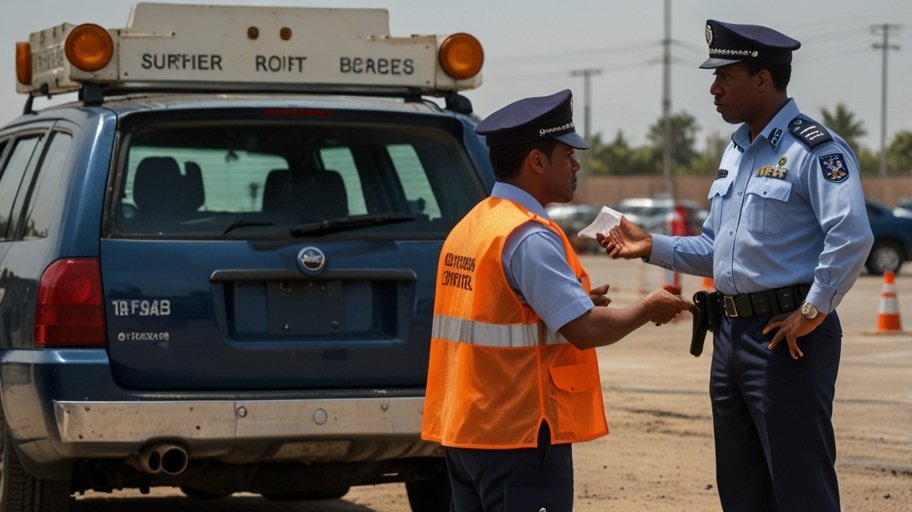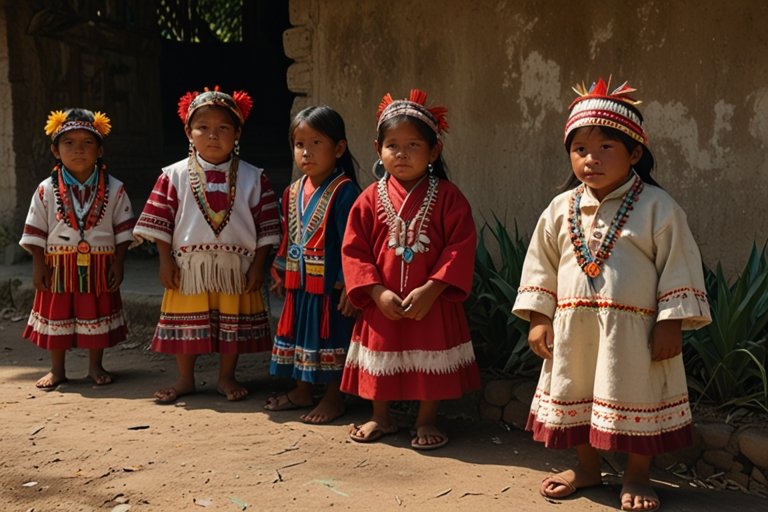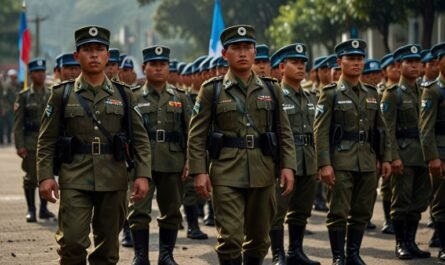This little Central American country is faced with an aging cultural heritage and breathtaking landscapes. Decades have been burdened for the country by the deep struggle with organized crime and drug trafficking. The case of Guatemala is important since it represents a crossroad in the global drug trade; cartels and criminal syndicates capitalize on its geographic location, institutional weaknesses, and socio-economic vulnerabilities. Guatemala’s fight against organized crime is a multifaceted battle that touches on issues of corruption, violence, poverty, and international policy, and it has deep historical roots.
Geographic and Strategic Importance in the Drug Trade
The geographical location of Guatemala makes it a country involved in drug trafficking. It is located between South America, where most of the world’s cocaine is produced, and Mexico, which is a major transit point to the United States — the largest market for illegal drugs. Guatemala is a natural corridor for narcotics trafficking because of its rugged terrain, dense jungles, and largely unmonitored coastlines.
The routes often lead through remote areas where there is little law enforcement and, therefore, cartels can operate with relative impunity. The routes are the means for the movement of other illicit goods such as weapons and human trafficking victims; this further entrenches organized crime in the country. The porous borders with neighboring countries, especially Mexico, also promote the movement of people and contraband.
Historical Background: Civil War and Institutional Failure
The long, intractable struggle in Guatemala against organized crime simply cannot be understood without placing that within the context of this country’s very brutal, long civil war between 1960 and 1996. The war devastated this nation in terms of lost human life, an estimated 200,000, and horrific and widespread human rights violations carried out by the military and other paramilitary forces against an indigenous people. That societal and institutional legacy is still divided and marked with mistrust today.

Corruption becomes markedly pathological during the war and becomes more pronounced within government and military institutions. After the peace accords in 1996, the country seems to attempt to rebuild its institutions, but damage has been done. Corruption and impunity have continued to mar the country, leaving fertile ground for organized crime. Many former military officials and members of paramilitary groups entered the drug trade with a expertise in violence, logistics, and clandestine operations.
This institutional weakness has become one of the biggest challenges in dealing with organized crime. Police and other law enforcement forces are underfunded, inadequately trained, and without the wherewithal to deal with well-armed and well-funded cartels. Corruption within the police and judiciary is also a big issue because bribes and intimidation are used to ensure that investigations never happen or cases never get to court.
Emergence of Mexican Cartels
From the 1990s through early 2000’s, Mexican drug cartels begun stretching their influence south down to Guatemala. It is then that the Sinaloa Cartel and the Zetas accepted the largest operations in this region as a place to run operations and as well, a passage for drug heads towards the United States. The intervention of those mighty cartels transformed Guatemala role within the global drug commerce. It transformed from only playing a side role toward a back-bone piece with a huge share in the network.
The Zetas, the most violent cartel ever established-from deserters of Mexico’s elite military units-this group of bandits was extremely cruel in its work in Guatemala. They brought with them a sophistication and militarization that the Guatemalan security forces were ill-equipped to handle. Established control over large parts of territory, especially within the northern departments of Petén and Alta Verapaz where they clash with government forces and rival gangs.
The growing influence of Mexican cartels worsened the crime situation in Guatemala. That is because the local gangsters and criminal organizations began to battle each other for control in the trafficking corridors and the territories. The competition would lead to a rise in murders, kidnappings, and extortion; the civilian population is inevitably caught in the middle. In the urban centers, things worsened when the Mara Salvatrucha (MS-13) and Barrio 18 gangs joined the drug trade and made it worse.
Corruption and Maintaining the Current Crisis
Perhaps corruption is the best facilitator of organized crime and drug trafficking in Guatemala. Corruption has seriously eroded state capabilities at all levels to counter organized crime from the local police force up to the highest offices in the land. Drug cartels and other criminal organizations bribe police officers, judges, and politicians to look away or even assist in their operations.
Political corruption has been devastating. Several high-profile scandals of corruption involving high-ranking government officials have come out in Guatemala. One of the worst cases was the “La Línea” scandal of 2015, where President Otto Pérez Molina and Vice President Roxana Baldetti were implicated in a customs fraud scheme. The scandal led to mass protests, followed by the resignation of both leaders. This exposed deep-rooted corruption within the Guatemalan government.
Politics is not the only domain where organized crime influences politics. Organized crime is not only perpetuating bribery but also affects and infects the election process. They fund political campaigns to ensure that their allies are in office. Their protection and assistance will give protection and favor to criminal organizations. It’s symbiotic and almost impossible to be effective with anti-corruption and anti-crime measures in that kind of relationship.
International Involvement and the Role of the United States
With its proximity to the United States and drug trade, Guatemala has been at the forefront of a number of international efforts that take on what it considers organized crime and drug trafficking. Part of the United States government’s efforts include financial assistance, training, and equipment provided to Guatemala’s law enforcement and military under plans such as the Mérida Initiative and the Central American Regional Security Initiative, CARSI.
The DEA has also been very actively involved with local authorities in Guatemala, working to disrupt trafficking networks and capture high-profile cartel leaders. But this has never been sufficient enough to dismantle the rooted criminal organizations or indeed to deal with the root causes of the problem.
According to critics, US policy toward Guatemala and other Central American countries tends to rely too much on militarized approaches, and the issue that provokes organized crime problems, poverty, inequality, and corruption, are not treated in the policy.
Deportation policies from the US side also acted as a harbinger of destruction since they pushed gangsters back into Guatemala, where most often resumed their felonious activities.
Socio-Economic Factors: Poverty and Unemployment
Socio-economic conditions in Guatemala are a matter of key importance regarding the reason why organized crime and drug trafficking persist there. The poverty rate found in Guatemala is one of the largest in Latin America, with over half its population classified as living below the poverty line. This percentage is even higher in rural areas and for the indigenous population. Most people resort to employment in the drug trade due to economic hardship, either through direct work as traffickers or indirectly through services such as transportation or security.
Poor opportunities, including unemployment, are a significant contributory factor, particularly for young people. Most gang members are young men with few alternative choices for enterprises that produce money. Easy cash combined with an overall lack of alternatives makes organized crime an attractive opportunity for many.
These socio-economic issues have been the hardest to be addressed by the government, and corruption and mismanagement have brought down many of the development initiatives. There is a total lack of investment in education, healthcare, and infrastructure, leaving large sections of the population marginalized and vulnerable to criminal organizations exploiting them.
Human Toll: Violence and Displacement
Organized crime and drug trafficking have devastated the human toll. Guatemala has one of the highest homicide rates in the world, where much of the violence is connected with drug trafficking and gang activity. Many criminal organizations act with impunity, while the residents are living in constant fear of extortion, kidnapping, and murder.
Mass displacement in Guatemala and within the country borders has also resulted from this violence. Thousands of people have lost their homes; they either stay in the safest parts of the same country or are trying to find ways into the United States. Migration is driven by a number of factors that go beyond the violence. Among the factors are the unavailability of opportunities and failure on the part of the government to protect its people.
Women and children are the most vulnerable. Rape is especially rampant. Women are forced into relationships with gang members or traffickers just to survive. Children are mostly recruited at a very tender age into gangs, either by force or just because they have nothing better to expect in life.

Attempts to Deal with Organized Crime: Challenges and Meagre SuccessesStill, efforts at checking organized crime and drug trafficking have not been wanting in Guatemala. One of the most critical endeavors perhaps was the creation in 2007 of International Commission Against Impunity in Guatemala, CICIG. This United Nations-supported body was to probe cases of corruption and other cases of organized crimes. Throughout its 12 years in operation, CICIG worked fundamentally to uncover corruption and hold the criminal networks to justice.
The work that CICIG did made it so that several top officials were prosecuted, even former President Pérez Molina. However, such success brought it into the crosshairs of powerful interests, and in 2019, President Jimmy Morales decided not to renew CICIG’s mandate, effectively ending the operation. This move was very widely condemned by anti-corruption advocates, who deemed it a major setback to the fight against impunity.
The Guatemalan government has also worked to reform both the police force and the judiciary, with little success. International assistance, including from the US and the European Union, has provided limited funding for some training and institution-building efforts, though corruption and resource shortages have remained significant obstacles to these recommendations.
On another note, under the banners of Colombia and Ecuador, there also existed Guatemala, struggling with serious issues with
Conclusion
In reality, this is the situation of a complicated fight, deeply implanted in all life aspects within the country: from civil war heritage and influences by Mexican cartels to corroded effects by corruption and devastative poverty and violence impacts, where a fight against organized crime within Guatemala can have no simple solutions.
While there have been some positive developments in the last few years, with CICIG efforts and key leaders in the cartels’ arrest, the situation remains grim in general. Currently, corruption still erodes the rule of law, and socio-economic conditions that feed the fires of organized crime continue unchecked. Without a strong and firm international support and real efforts to initiate change within, the battle against organized crime and drug trafficking in Guatemala will be endless in the near future.



